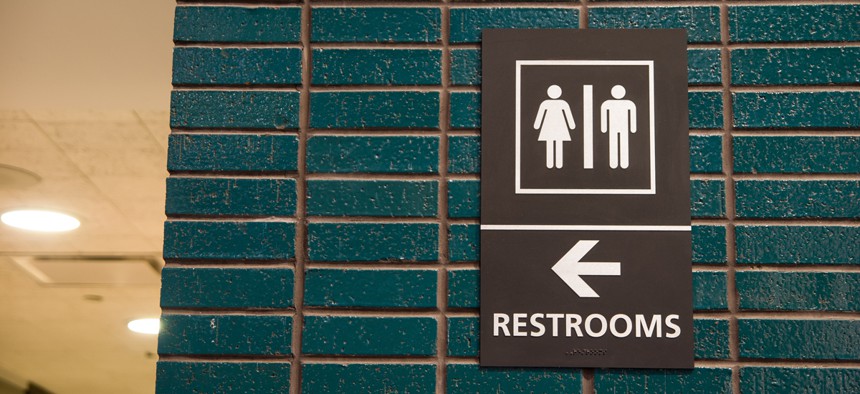
Freer/Shutterstock.com
The Senate's Bathroom-Stall Index
One measure of America’s slow progress toward boosting the number of women in elective office is the number of toilets in the congressional restrooms.
ASPEN, Colo.—Women now account for 47 percent of the American workforce, 52 percent of professional and management employees, and 57 percent of newbachelor’s degrees. But even after gains in the 2012 election, they remain just 20 percent of the Senate.
That, however, was enough to create a “traffic jam” in the women’s restroom reserved for senators, which had just two stalls, recalled Senator Amy Klobuchar. She joined with Maryland’s Senator Barbara Mikulski to press for renovations. “The architect of the capitol presented a certain number of stalls, and we told him that it wasn’t acceptable, because it was a glass ceiling,” she said. It forms an unconventional index of progress toward parity. Today, there are four stalls; Klobuchar clearly hopes that this, too, will soon prove inadequate.
It’s a favorite anecdote for the senior senator from Minnesota, frequently deployed as part of her disarming, often self-deprecating humor. She trotted it out again on Sunday at the Aspen Ideas Festival, during a broad-ranging conversation with the Aspen Institute’s Walter Isaacson. And it plays to Klobuchar’s proven knack for offering personal anecdotes and levity in the service of more serious points.
Klobuchar used the great restroom crisis of 2013 to provide a particularly vivid illustration of how the Senate’s women are able to collaborate across partisan lines on issues of common concern. “We’re in a minority group and so we tend to stick together,” she said. “You get power that way by sticking together across the aisle.” With her point established, she cited other, more conventional examples. “It was a big help to me when the twenty women senators requested a hearing on my sex-trafficking bill,” she said “and we went on to pass that.”
More than common interests are at play here, Klobuchar argued; many of the women in the Senate also share a common approach. “Most of them came up the ‘accountability route,’” she said, explaining that women running for office are particularly likely to emphasize specific goals, and to run on a record of getting things done. That, she suggested, inclines them toward collaborating when they arrive in Washington, in pursuit of their goals.
And for Klobuchar, at least, it suggests an answer to the partisan gridlock that has largely prevented Washington from tackling the issues of most-pressing public concern. “One of the solutions,” she said, “would be to actually have more women in Congress.”
It may be time for another round of renovations at the Capitol.
(Image via Freer/Shutterstock.com)
NEXT STORY: What If the Oceans Were National Parks?






